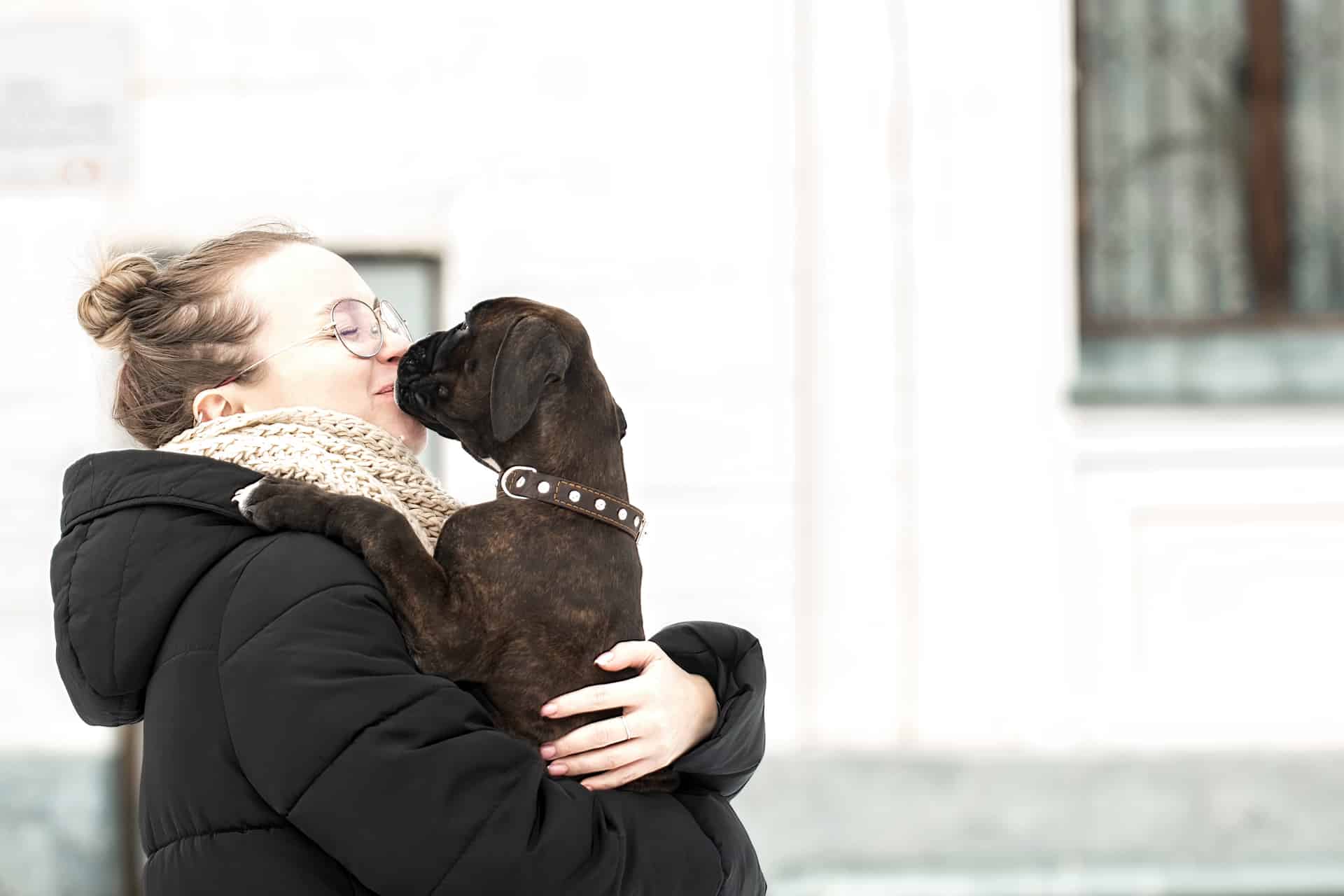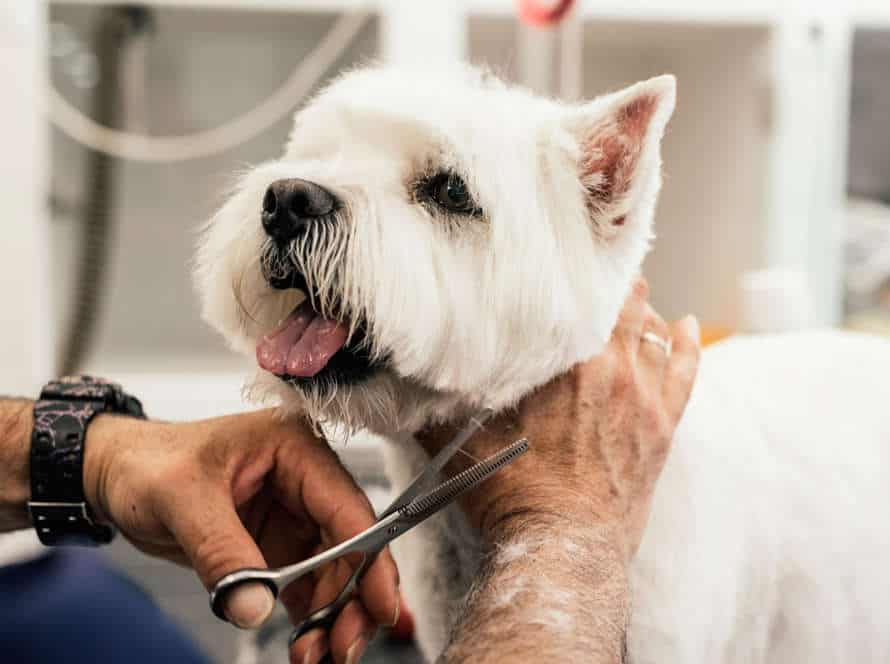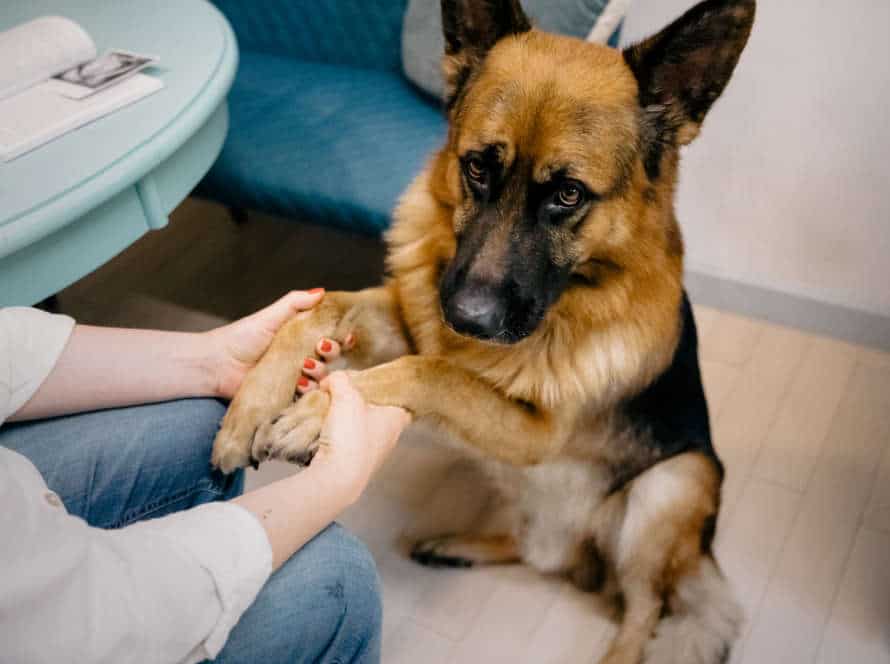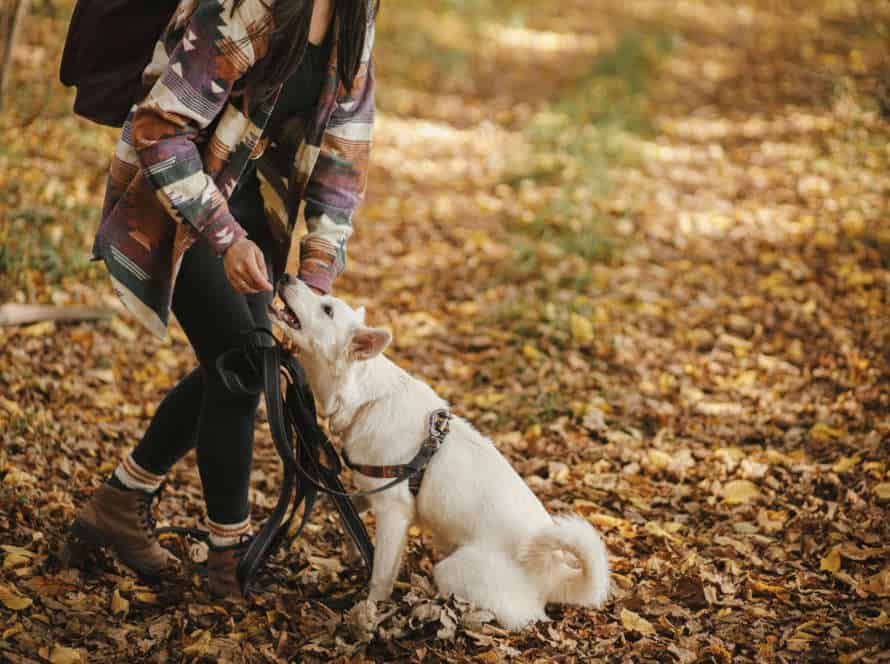Your Dog’s Trust: Unlocking the Key to Obedience
Gaining your pup’s trust is the key to success in training! When your pooch relies on you, they will be more likely to follow orders and be obedient. Earning trust is a process that takes time and dedication, but the payoff is worth it. Here are some tips:
- Spend quality time with your pup daily – play, go for walks, and give them attention.
- Stick to rules and training – dogs love routine and consistency.
- Use positive reinforcement – reward with treats, compliments, and cuddles when your dog does something good.
- Have patience – building trust requires time, so stay consistent and patient.
Pro Tip: Remember that trust is a two-way street. Just like you have to gain your pup’s trust, your pup has to trust you too. The most important things for trust-building are consistency, patience, and positive reinforcement!
Understanding Dog Behavior
Understand dog behavior to build a positive relationship with your canine companion and gain obedience. Dogs are social animals. They need their owners for companionship, protection and security. Your pup looks to you for comfort, leadership and guidance. Grasping their behavior helps us to foster trust, respect and mutual understanding.
Examining canine emotions
Dogs are smart and social. They have a lot of feelings that show in their behavior. Understanding this helps us be close to our four-legged pals.
Examining dog emotions starts with reading their body language and hearing their sounds. Signs of a content pup include a wagging tail, floppy ears, and a relaxed attitude. Fear or nervousness may be seen as cowering, avoiding eye contact, and barking or growling.
It is also important to pay attention to the environment and what may be causing your pup’s behavior. Watching your dog in different situations can help you figure out patterns and learn what triggers certain emotions.
By being thoughtful and caring to get to know your pup’s behavior, you can strengthen your relationship and make them more obedient.
Factors contributing to your dog’s behavior
Your pooch’s actions can be affected by multiple elements, including breed, raising, health, and environment. Knowing these elements is essential to winning your dog’s trust and training them.
- Breed: Different breeds of dogs have unique behavior tendencies based on their inherited genes.
- Upbringing: From early experiences and teaching, your pup’s behavior and socialization are heavily shaped.
- Health: Pain, sickness, or mental decline can alter your dog’s behavior and change their character.
- Environment: Home, neighborhood, and social encounters can all have a huge effect on your dog’s behavior.
Being aware of these matters and taking positive steps to manage them is necessary for all dog owners. This can include socializing your dog, giving proper training and exercise, and seeking medical assistance if needed.
Pro tip: Knowing your canine’s behavior can help you create a stronger bond and improve your relationship with your four-legged buddy.
Building a stronger relationship with your dog
Strengthen your connection with your canine companion by understanding their actions, and gaining their trust. Try these tips:
- Notice your pup’s body language and vocalizations to comprehend their wants, attitudes, and emotions.
- Employ positive reinforcement by giving treats, compliments, and playtime when they do something right.
- Set up reliable mealtime, walking, and playtime schedules to create trust and a reassuring atmosphere.
- Share quality time with your pooch, participating in activities they love in order to make positive links and foster bonding.
- Train your pup using positive strategies that reward good behavior and discourage bad behavior.
- Gain an understanding of your pup’s behavior and trust, and you’ll have a stronger, more gratifying relationship with your furry friend.
Training Techniques for Obedience
It’s essential to train your pup to obey commands. It’s a way to show them love and create a bond. Understanding their needs and building trust is the key to successful training. This article looks into techniques to help your pup understand obedience and strengthen their trust with you.
Positive reinforcement training
Positive reinforcement training is a technique for teaching obedience. It relies on rewards to make good behavior more likely for dogs. Rewards could be food, praise or a toy. Here’s how:
- Make a list of achievable skills you want your dog to learn, focusing on one at a time.
- Choose a reward your dog will like.
- Practice the command in a low-stress setting.
- Reward with praise or the reward when your pup does the desired behavior.
- Be consistent and repeat the process.
Getting the results you want takes patience. Pro Tip: Talk in a calm, friendly tone. This helps keep your dog’s attention during training.
Clicker training
Clicker training is a great way to teach your dog new behaviors or improve existing ones. It is a positive reinforcement technique. The process is simple – when the dog performs a desired behavior, like sitting or lying down, you immediately make a clicking sound and then offer a treat.
Your pup learns that the clicking sound is associated with the good behavior and gets a reward too. This encourages them to repeat the behavior in the future. Clicker Training is gentle and a great way to build trust and strengthen the bond with your pup.
Leash training and commands
Leash training and commands are must-haves for obedience training your pup. They help build a solid bond between you and your furry pal. Here are some helpful techniques to leash train and teach basic commands:
Leash Training:
- Introduce your dog to the leash gradually, let ’em sniff it and get comfy.
- Start with short sessions at home or in a peaceful outdoor area.
- If your dog walks without pulling, stop and reward them with praise.
- Gradually increase length and frequency of walks, and always praise good behaviour.
Commands:
- Use clear and concise commands like “sit,” “stay,” “come,” and “heel” when training your pup.
- When giving commands, use positive and reassuring tones to encourage them.
- Reward your dog with treats and praise every time they obey a command, reinforcing the behaviour you want.
- Consistency is key when teaching commands, so practice regularly and be patient.
Obedience Training Programs
Obedience training programs are significant for creating a strong connection with your pup. Having an obedient and well-mannered dog not just makes you proud, but it also keeps your pup safe and cultivates mutual trust and respect in your relationship.
Let’s examine some of the ways you can use obedience training to foster your pup’s trust and attain desired conduct.
Private obedience classes
Private obedience classes give your pooch personalized, one-on-one attention and training. These classes are customized for your pup’s needs, behaviors, and goals.
Benefits:
- Professional trainer feedback and attention
- Customized training plans tailored to your pup
- Flexible scheduling and locations
- Individualized attention to address any concerns
- Faster and more effective results
Investing in private obedience classes can create a strong bond between you and your furry friend.
Group obedience classes
Group obedience classes are a great way to train your pup. They enhance trust and ensure obedience for life. Professional dog training centers provide the ideal environment for group classes.
Here are some of the benefits:
- Socialization: Your pup learns how to communicate with other dogs in a safe setting. Especially important for puppies.
- Distraction Training: The classes help your pup stay focused, even with distractions.
- Expert Guidance: Trainers give personalized attention and individualized training based on your pup’s needs.
- Positive Reinforcement: Trainers focus on positive reinforcement. This builds a strong bond between you and your furry friend.
Group obedience classes teach good manners and social skills. Plus, it builds a loving relationship between you and your pup.
Boot camps and intensive training
Enrolling your pup in a boot camp or intensive obedience training can open the door to better obedience and increase the bond between you and your furry pal. These classes provide a structured environment where your pup can focus on learning commands. Boot camps and intensive training are conducted by experienced dog trainers. Duration is usually a few days to many weeks.
Advantages of this style of training:
- Concentrated focus without any disturbances.
- Steady training from a pro.
- Socialization with other canines and people.
- Learning of commands like sit, stay, come, heel and more.
- Improved behaviour and self-confidence.
It is essential to remember that although boot camps and intensive training programs can bring quick results, regular reinforcement of training at home is necessary to keep your dog’s obedience.
Common Obedience Problems
Dog owners often have to deal with obedience issues.
This can be tricky, if the pup doesn’t know why they’re being asked to do something, or don’t trust the person commanding them. Building trust between human and pup is the answer. Easier said than done, right? Nope!
Separation anxiety
Separation anxiety is a common obedience problem faced by dog owners. This disorder is caused by fear and anxiety when your pup is alone or separated from their caregiver.
Symptoms include:
- Excessive barking or howling
- Destructive behavior
- Trying to escape the house or crate
- Potty accidents inside
If you think your dog has separation anxiety, there are solutions:
- Behavior modification training
- Desensitization and counterconditioning
- Medication or supplements
Speak to your vet or a professional dog trainer for advice. With patience, you can help your pup overcome anxiety and unlock obedience.
Chewing and destructive behavior
Chewing and destructiveness are common issues when owners train their dogs. These can be from boredom, anxiety, teething, or no training. Here are some tips:
- Provide chew toys and switch them for variety.
- Keep your pup in a safe place when you can’t watch them.
- Use positive reinforcement to show what toys are okay to chew.
- Make a routine for your dog to reduce anxiety.
- If the behavior persists, seek help from a professional dog trainer.
Aggressive behavior
Aggressive behavior in dogs is a common obedience issue. It’s both frustrating and dangerous. To fix it, you must understand the cause and get help from a professional trainer.
Common causes are fear, territorialism, and past trauma. Dogs may also act aggressively if they feel their owners are threatened or if they’re in pain or discomfort.
A professional trainer can help you identify the cause and create a plan to address the behavior. This plan may include desensitization exercises, positive reinforcement training, and creating a secure and reliable environment.
It’s important to address aggressive behavior early, before it gets worse. With patience, consistency, and professional help, it’s possible to help your dog overcome aggression and develop trust and obedience.
Additional strategies for Obedience
Building trust between you and your pup is a vital part of training them. This trust will be the base of any obedience lessons they may have in the future. To assist in this, there are certain tactics that can be employed. Here, we’ll look at those tactics and how they can aid in teaching your pup obedience.
Proper exercise and playtime
Exercise and playtime are key for a content pup. These activities keep ’em healthy, both body and mind. Here’s how to make it part of your daily routine:
- Take your pup for a 30-min walk.
- Set up playdates with a friend’s pup or hit the park.
- Play fetch or tug-of-war.
- Teach ’em tricks and commands with positive reinforcement.
- Switch up their toys to keep them interested.
- Tailor the routine to your pup’s age, breed, and energy.
Pro tip: Make exercise and playtime part of your daily routine to improve their behavior.
Using calming aids
Calm aids can be a great way to build trust and obedience in your pup. They come in several forms. Herbal supplements, calming chews, sprays, and diffusers all use natural ingredients like chamomile and lavender. This helps reduce anxiety and promotes relaxation.
Creating a comfy environment for your pet is essential. Positive reinforcement techniques like treats and praise reward good behaviour.
Consult your vet before giving any calm aids. They will ensure the right dosage.
Consistency is key when training your dog. Use calming aids with positive reinforcement techniques for comfort and relaxation.
Considering medical reasons for disobedience
It’s essential to consider medical factors when dealing with your dog’s disobedience. Additionally, other strategies for obedience training should be implemented.
Possible medical issues that can cause this behavior include:
- Pain – Pain can lead to disobedient behavior. Look for signs of discomfort like limping, whining or not wanting to move.
- Hearing & Vision Loss – Loss of these senses can cause confusion and disorientation, resulting in disobedience. Have your vet check your dog regularly.
- Thyroid Issues – Hypothyroidism can cause a decrease in energy and mood, which may lead to disobedience. A blood test can diagnose this.
By ruling out medical conditions, you can find out if the disobedience is a behavioral issue. This will help create an effective obedience training plan.
Frequently Asked Questions
1. What is the key to unlocking my dog’s obedience?
The key to unlocking your dog’s obedience is trust. Without trust, your dog will not feel comfortable following your commands or instructions. When you establish trust, your dog will be more likely to listen and obey.
2. How do I build trust with my dog?
You can build trust with your dog by consistently providing him with love, attention, and positive reinforcement. Spend time with him, play with him, and give him treats when he listens to your commands. This will help him to associate good behavior with positive feelings.
3. How can I train my dog to be obedient?
The best way to train your dog to be obedient is to start with basic commands such as sit, stay, and come. Use positive reinforcement such as treats, praise, and petting when your dog obeys the command. Be consistent in your training and patient with your dog.
4. What if my dog doesn’t listen to me?
If your dog doesn’t listen to you, it may be because he does not trust you yet or because you have not been consistent in your training. Try using more positive reinforcement and spending more time with your dog to build trust. If you are still having trouble, consider seeking the help of a professional dog trainer.
5. What are some common mistakes to avoid when training my dog?
Some common mistakes to avoid when training your dog include using punishment or negative reinforcement, being inconsistent in your training, and not providing enough positive reinforcement. It’s also important to avoid confusing your dog with mixed signals or commands that are too complex.
6. How long does it take to train a dog to be obedient?
The length of time it takes to train a dog to be obedient can vary depending on the breed, age, and personality of the dog. It can take anywhere from a few weeks to several months to see significant improvements in your dog’s obedience. Consistency and patience are key factors in successful dog training.







